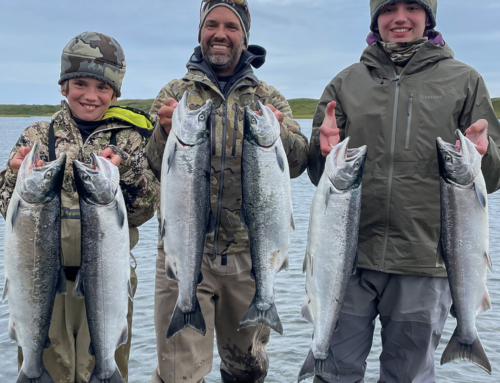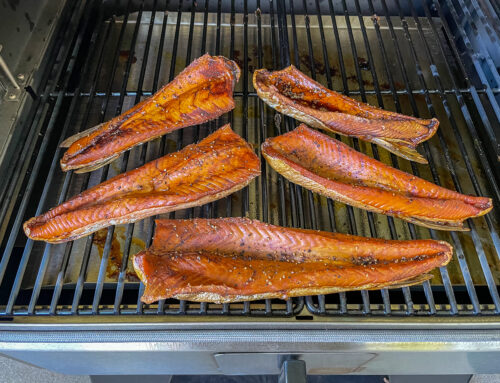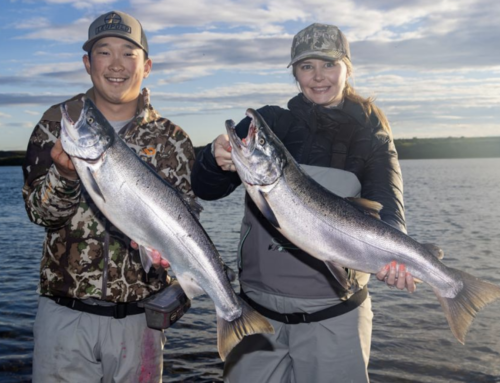We at Becharof Lodge on Alaska’s Egegik River, have what some veteran anglers call the best silver salmon fishing in Alaska. And while many anglers are excited to take home plenty of coho salmon fillets, some are just as thrilled to take home fresh salmon eggs that they will cure and use as bait to catch more salmon and even steelhead.
When it comes to river fishing for king, coho or chum salmon, many anglers would agree the best natural bait is salmon eggs. When properly handled and cured, salmon eggs take on an appeal salmon can’t resist. Combine the ideal color, texture and scent in a cured salmon egg, and you have the optimal salmon bait.
While egg curing recipes are important, the handling process is just as vital. The end cure is only as good as the eggs you start with. Begin with bruised, cut-up skeins or ruptured cells and your cured baits will be subpar. Start with clean, blood-free skeins that have not been chopped in the gutting process, and you’re on the road to realizing just how well eggs can cure and perform.
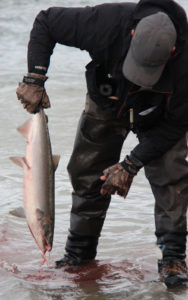 The salmon egg curing process begins well before the eggs make it home. To achieve fresh, high quality eggs for curing, start with bleeding the fish immediately after it’s caught. First, strike the fish on the head, right between the eyes to ensure a quick, clean kill. From there, cut a gill rake so the blood will be pumped out of the fish.
The salmon egg curing process begins well before the eggs make it home. To achieve fresh, high quality eggs for curing, start with bleeding the fish immediately after it’s caught. First, strike the fish on the head, right between the eyes to ensure a quick, clean kill. From there, cut a gill rake so the blood will be pumped out of the fish.

Often times people place blame on the actual cure when their eggs quickly lose color or fall apart within the first few casts. In reality, such faulty eggs are usually the result of not being properly cared for early in the handling process. This could also be due to the freezing and thawing of the eggs too many times, or too quickly, which results in the breaking down of individual cells.
When handling fish, do so with care. Avoid tossing your fish, dropping them on the ground or flinging them against objects like rocks, coolers or the bottom of the boat. Fish flesh is extremely tender and easily damaged. Not only will this mishandling damage the meat, thus decreasing it’s overall taste and quality, it will damage the eggs as well.
When on the water, removing your eggs from the fish is a good option. Done immediately after killing the fish, the skeins of eggs are clean and beautiful in coloration. If there is still blood in the main vein running the length of each skein, cut it and force the blood out with a finger. Place the skeins in a clean, sealable plastic bag so they don’t come in contact with potential contaminants. From there, place the eggs somewhere where they are cool and protected. If you have no such place, sometimes leaving the eggs in the fish until you’re ready to clean them all, or once back at camp, is the best option.
No matter where in the process you handle your eggs, using rubber gloves is a good idea. Remember, a salmon’s sense of smell is measured in parts per billion, and human odors released from oils through our skin can make a difference in egg smell. Granted, on the Egegik River, coho aren’t too picky, but if curing up eggs to take home, where you’re targeting finicky king salmon, every attention to detail can help.
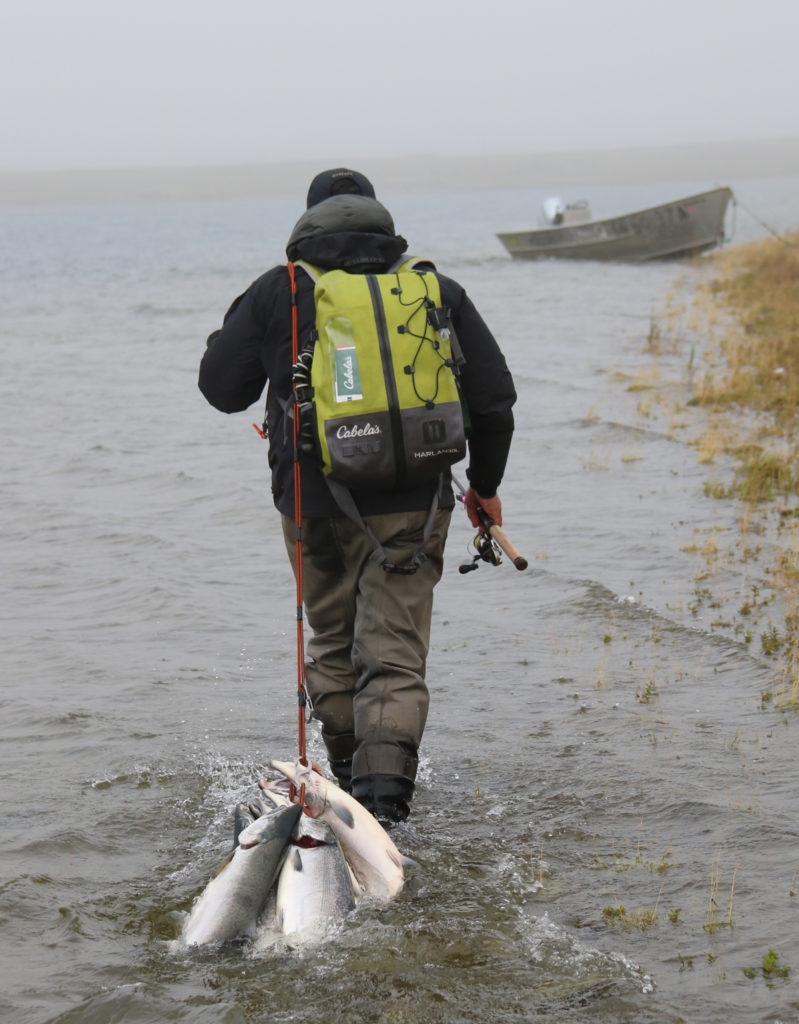
If in a remote camp like ours, Becharof Lodge, for a few days or more, consider taking your cure with you. If at all possible, avoid freezing any eggs prior to curing them. The reason is, egg cells are nearly all water, and water expands as it freezes. Freezing then thawing raw eggs to cure them, breaks down the cell membrane which leads to an egg that easily falls apart when being fished. This is why it’s best to cure your eggs before freezing them for longterm storage. If you have to freeze eggs, be they cured or uncured, thaw them slowly in a refrigerator or cool, dark place so as to lessen rupturing. Keep them out of the sunlight, which will darken them.
When it comes to curing salmon eggs, the end product is only as good as the eggs you start with. So, if looking to take some eggs home with you from your Alaska silver salmon journey, bring some cures up with you, toss in several sealable baggies, and cure away. We have plenty of freezer space, allowing you to take home not only some of the best eating fish Alaska has to offer, but some of the best fishing bait there is.




